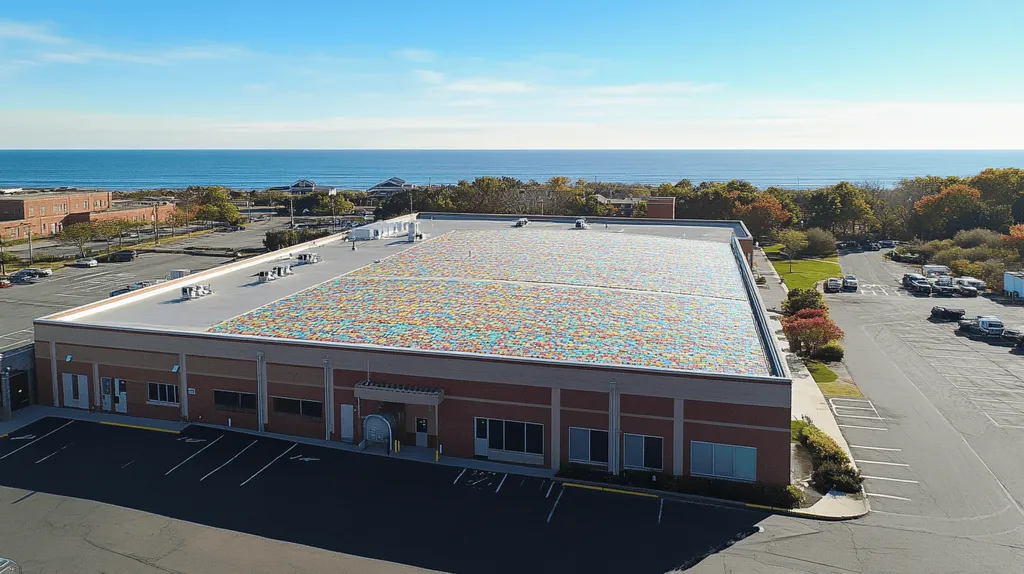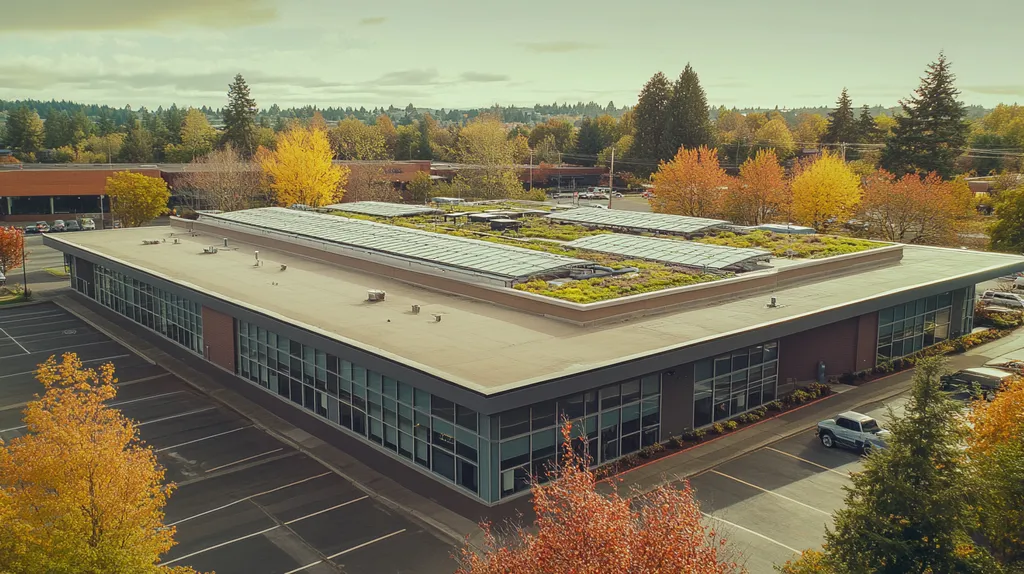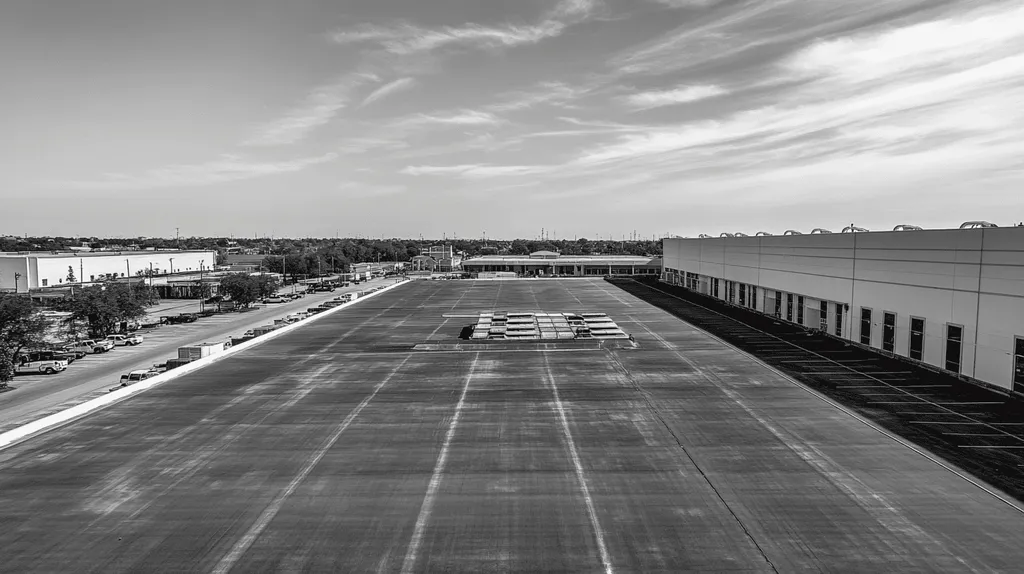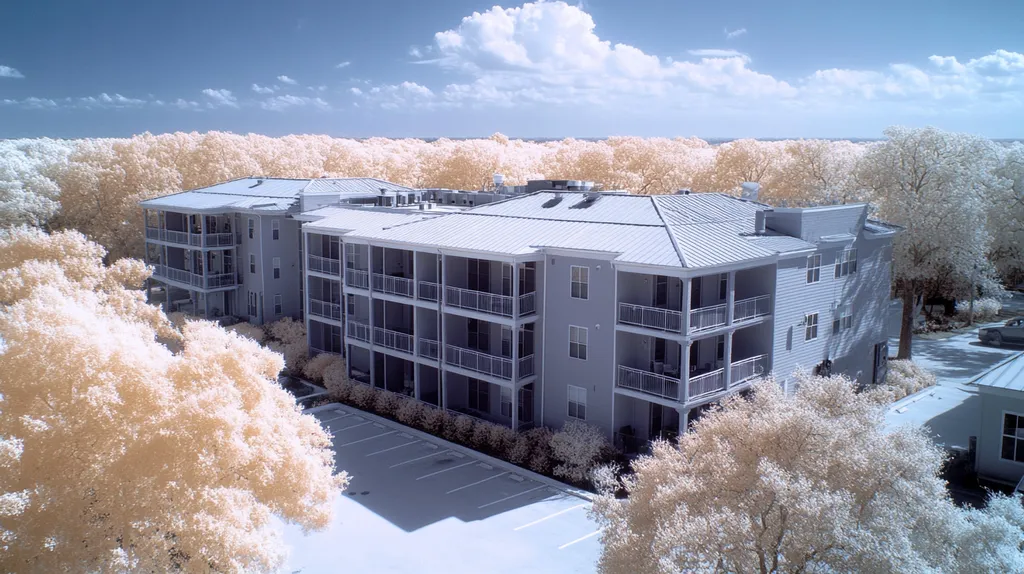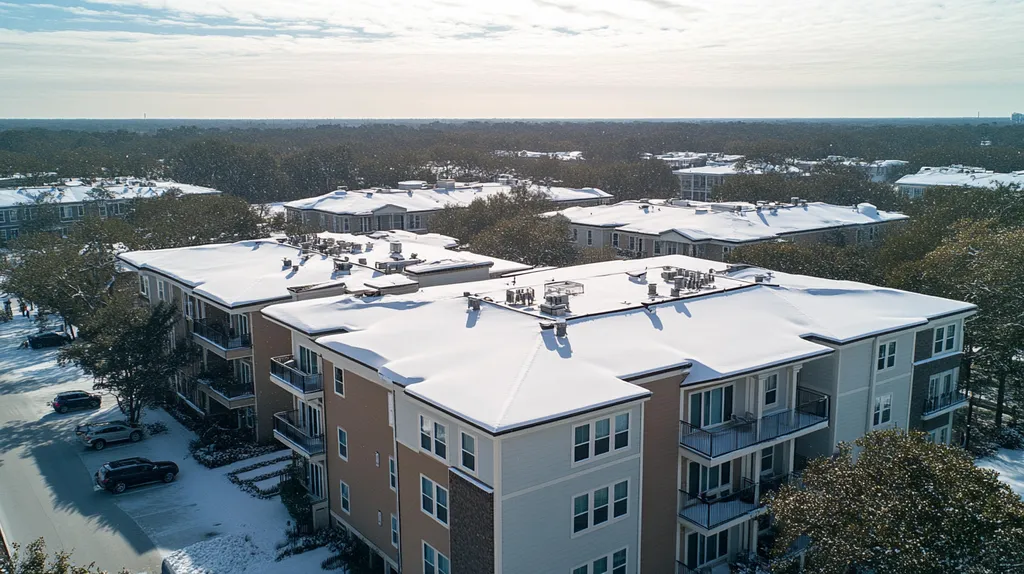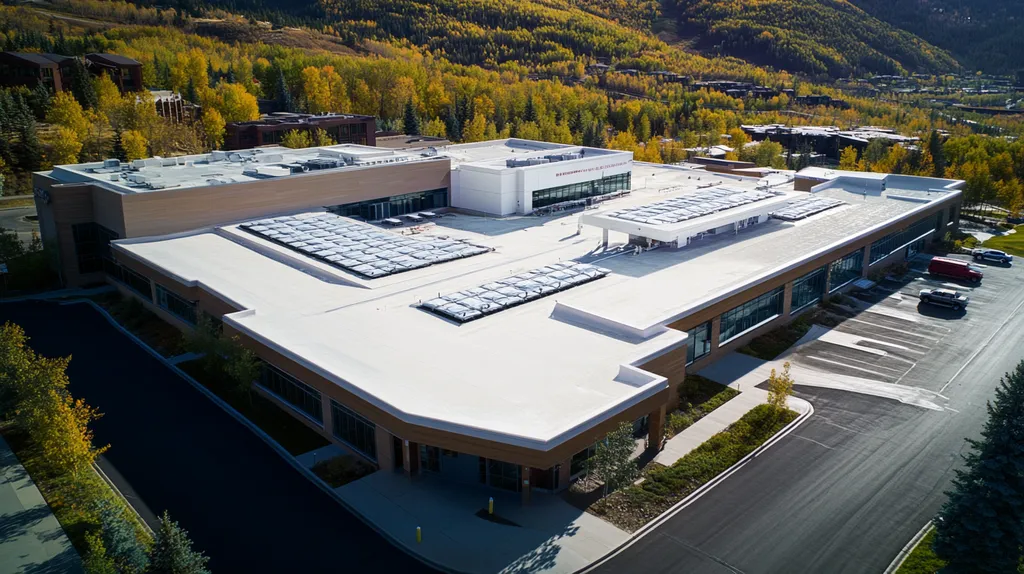Every year, commercial property owners lose millions of dollars due to premature roof failures and deterioration of historic buildings. Industry data shows that up to 80% of commercial roofs fail before reaching their expected lifespan, primarily due to outdated preservation practices.
Current approaches to roof maintenance and preservation consistently fall short, emphasizing reactive repairs over proactive protection. This systematic failure threatens both the structural integrity and historical value of commercial properties across the nation.
By examining established practices, understanding systemic issues, and exploring data-driven solutions, property owners can implement more effective strategies to protect their investments while preserving architectural heritage.
SECTION 1: CURRENT PRACTICES
The urgency of effective commercial roof construction and preservation cannot be overstated. Each year, property owners collectively face millions in losses due to premature roof failures, which can stem from neglecting maintenance. Unfortunately, current practices often rely heavily on reactive maintenance, infrequent inspections, and poor contractor choices. This not only leaves buildings vulnerable to damage but also jeopardizes their historical integrity.
Reactive Maintenance Approaches
In the realm of commercial roofing, reactive maintenance dominates the scene, with property owners often waiting for leaks or visible damage to initiate repairs. This approach results in inflated repair costs and threatens the structural integrity of historic buildings.
Proactive maintenance strategies, such as regular inspections and preventive repairs, are essential yet frequently overlooked. Research indicates that an updated maintenance plan can extend a roof’s lifespan by as much as 50%.
Many facility managers remain unaware of the savings that proactive measures can provide. Addressing issues early not only reduces costs but also extends the life of the roof.
Without embracing a proactive mindset, property owners expose themselves to significant financial risks. The consequences of deferred maintenance can escalate into the need for large-scale roof replacements, disrupting budgets and long-term planning.
Limited Inspection Schedules
Limited inspection schedules play a crucial role in the woes of commercial roofing today. Routine inspections are often sidelined due to misconceptions about their costs or a lack of understanding of their value. This short-sightedness can lead to dire consequences over time.
Many building owners may be unaware that minor issues, when detected early, can be addressed quickly and affordably. In contrast, infrequent inspections allow small problems to balloon into costly repairs.
The Building Owners and Managers Association International recommends quarterly inspections to identify potential issues before they escalate. However, the industry still sees many companies clinging to outdated practices with minimal oversight.
By implementing a more rigorous inspection schedule, property owners can save both time and money. Collaborating with qualified inspectors who are well-versed in historical preservation can lead to better outcomes and increased roof durability.
Inadequate Contractor Selection
The choice of contractors is another critical area where current practices falter. Many property owners gravitate towards the lowest bid without thoroughly vetting a contractor’s qualifications or previous work. This can jeopardize both the longevity of the roof and the building’s historic character.
Opting for contractors with proven expertise in historic preservation is essential. Those who specialize in this niche understand the unique materials and techniques required, which can greatly influence the success of roofing projects.
Poor contractor selection can result in the use of inappropriate materials or shortcuts that undermine the preservation of historic features. Facility managers must prioritize value rather than merely focusing on cost.
To enhance project outcomes, property owners should conduct detailed interviews and request references specific to preservation projects. Investing time in this selection process can lead to significant benefits down the line.
SECTION 2: SYSTEMIC ISSUES
Commercial roofing often languishes in the shadows, treated as a secondary concern until problems arise. Alarmingly, up to 80% of roofs fail prematurely due to a neglect of preventative maintenance, costing property owners thousands in unanticipated repairs. Addressing these systemic issues is crucial for maintaining not only the integrity of the roof but also the overall value of the property. This section unpacks key challenges, including the dangers of ignoring preventative maintenance, the pitfalls of misunderstanding roof warranties, and the risks associated with neglecting flashing maintenance.
Ignoring Preventative Maintenance
Preventative maintenance is a cornerstone of a roof’s longevity, yet it is often undervalued. Many property owners fall prey to the misconception that a newly installed roof practically takes care of itself. This belief breeds neglect, which can escalate into severe and costly damage over time.
Minor leaks can quietly worsen, leading to extensive interior damage and complicated repairs. Regular inspections and routine maintenance are essential for identifying issues early, allowing for timely, manageable fixes before they spiral out of control.
Implementing a proactive maintenance strategy can extend a roof’s lifespan significantly, potentially saving property owners 30% or more in expenses tied to premature roof replacements.
Investing in preventative measures not only strengthens the roof but also enhances the property’s overall value and marketability, making it a wise financial decision.
Misunderstanding Roof Warranties
Roof warranties can often be more confusing than helpful, leading property owners astray with obscure fine print that may void coverage. Many facilities managers do not realize that failing to adhere to warranty stipulations can result in denied claims when a roof fails. This misunderstanding can have dire financial consequences.
For example, common warranties typically require regular maintenance to maintain validity. If a roof collapses due to neglected upkeep, the owner might find themselves facing repair costs they believed would be covered.
It is imperative for property owners to thoroughly understand their warranty terms and fulfill their obligations proactively. Keeping detailed records of maintenance activities adds another layer of protection when it comes time to file claims.
By grasping the intricacies of roofing warranties, property owners can safeguard their investments and ensure they receive the support they need if issues arise.
Neglecting Flashing Maintenance
Flashing is a vital yet often underestimated component of roofing systems. Its primary role is to seal joints and prevent water from seeping in, yet its maintenance frequently takes a backseat. Such oversight can expose the entire roof to vulnerabilities that may result in serious leaks and structural damage.
Regularly inspecting flashing for signs of wear, cracks, or detachment is essential. Ignoring minor issues can cause them to balloon into major repairs that far exceed the cost of basic maintenance.
Moreover, using the wrong flashing materials or installation techniques can further exacerbate problems, leading to a shorter lifespan for the roof as a whole. Investing in high-quality, appropriate flashing materials pays off in the long run.
By prioritizing flashing maintenance, property owners not only ensure that their roofs stay watertight but also contribute to the overall durability and efficiency of the building.
SECTION 3: MISSED OPPORTUNITIES
The current approach to commercial roof construction is riddled with missed opportunities that can have profound financial and safety ramifications for property owners and facility managers. Delayed detection of roofing damage not only inflates repair costs but can also introduce serious safety hazards for building occupants. Moreover, overlooking energy efficiency measures can lead to skyrocketing operational expenses. Finally, failing to implement practices that extend the lifespan of roofing systems often results in premature replacements, costing businesses both time and valuable resources.
Delayed Damage Detection
In the realm of commercial roofing, issues are often neglected until they become glaringly visible. This reactive mindset can lead to severe consequences because problems such as water infiltration or structural weaknesses may remain concealed for extended periods.
Research indicates that early detection can reduce roofing repair costs by as much as 50%. Unfortunately, many facilities lack regular inspections, allowing minor issues to escalate into major headaches.
By implementing proactive maintenance schedules, property owners can avoid these costly outcomes. Regular assessments are vital for identifying vulnerabilities before they turn into severe problems that strain budgets.
Investing in preventive measures not only protects assets but also extends the life of roofs, which can lead to significant long-term savings.
Overlooking Energy Efficiency
Traditional roofing practices often overlook energy efficiency, missing a crucial opportunity to cut operational costs. Outdated roofs frequently lack modern insulation and reflective materials, pushing up heating and cooling demands significantly.
A report from the Department of Energy reveals that upgrading to energy-efficient roofing systems can save building owners 20-30% on energy bills. This not just benefits the environment, but it also bolsters the bottom line.
Incorporating energy-efficient materials and technologies into roof construction is not just a passing fad; it is a pivotal strategy for sustainable business operations. By investing in energy efficiency, property owners can enhance indoor comfort and significantly lower utility costs.
Facilities managers who champion energy-efficient designs find their investments pay off in enhanced performance and profitability.
Failing to Extend Roof Lifespan
The life expectancy of commercial roofs is compromised when proper construction practices and maintenance are neglected. Many standard practices fail to leverage the latest advancements in materials and installation techniques.
Modern roofing systems can last significantly longer, reducing the need for frequent replacements. For instance, a well-maintained thermoplastic PVC roof can enjoy a lifespan of over 30 years, compared to just 20 years for older counterparts.
Investing in high-quality materials and innovative roofing solutions not only extends roof lifespan but also boosts overall building performance. Proactive management of roofing systems allows property owners to sidestep the disruptive and costly process of full replacements.
By prioritizing longevity in roofing decisions, businesses can achieve substantial savings and enhanced property value over time.
SECTION 4: ROOT CAUSES
Addressing the roofing needs of commercial properties is not just important; it’s essential for preserving their value and functionality. Alarmingly, over 50% of commercial roof systems fail prematurely due to a lack of proper attention and maintenance practices. To combat these issues, property owners and facility managers must grasp the root causes of these early failures. This section delves into three critical factors: insufficient education on roofing needs, a tendency to budget only for short-term costs, and inadequate installation practices.
Lack of Education on Roofing Needs
A significant barrier to effective roofing management is the gap in educational resources available to property owners. Many owners do not fully understand the crucial role that roofing systems play in safeguarding their buildings against the elements. Ignoring the need for proper maintenance can result in extensive and costly damage.
Without a solid understanding, property owners might overlook routine inspections that can reveal hidden issues before they escalate. For instance, a minor leak can quickly evolve into serious mold growth or structural decay if not addressed promptly. This failure to act proactively can lead to major expenses later.
Additionally, facility managers often juggle countless responsibilities, causing them to prioritize other tasks over roofing oversight. Consequently, they may rely on outdated or inaccurate information when making decisions regarding roof maintenance and upgrades.
The lack of standardized training programs within the industry further exacerbates the problem. This gap not only increases risks of voided warranties but can also lead to heightened insurance costs as roofing systems age without proper care.
Budgeting for Short-Term Costs
Budget limitations frequently dictate the choices property owners make concerning their roofing systems. Often, managers prioritize immediate financial savings over the long-term health and durability of their roofs. This short-sighted focus can lead to detrimental cost-cutting measures that severely hinder necessary maintenance.
For instance, deferring regular maintenance may save money in the short run, but it can lead to costly repairs down the line. Research has shown that for every dollar invested in early maintenance, property owners can save an estimated $3 to $5 in future repair costs.
Moreover, many property owners opt for the cheapest roofing materials available, believing they are making a savvy financial choice. However, this often results in faster deterioration, ultimately leading to higher costs. Such an approach overlooks the potential for return on investment offered by high-quality materials and practices.
This short-term budgeting mindset not only threatens the structural integrity of the roof but also diminishes the overall investment in the property. A building with a poorly maintained roof can experience significant drops in market value, ultimately damaging the owner’s financial position.
Inadequate Installation Practices
The prevalence of inadequate installation practices serves as another root cause of roofing failures in the industry. Many commercial roofing projects fail to adhere to best practices, resulting in easily avoidable issues. Poor installation can compromise even the most durable roofing materials, leading to significant long-term problems.
For example, if a roofing membrane is not properly aligned or sealed, vulnerabilities can arise that invite leaks. These types of mistakes often stem from a lack of skilled labor or insufficient oversight during installation, posing severe risks to the building’s integrity.
Additionally, the variation in contractor quality plays a crucial role in the success of roofing projects. Property managers may choose contractors based on low cost rather than proven skills, resulting in inferior installations that do not meet necessary standards.
The importance of rigorous quality control during installation cannot be overstated. Subpar practices can drastically shorten the lifespan of roofing systems and generate substantial repair costs for property owners. Understanding and implementing quality installation techniques is essential for maintaining the longevity and performance of commercial roofs.
DATA DRIVEN EVIDENCE
Neglecting proactive roofing strategies can result in soaring costs for property owners and facility managers. A recent study illustrates that reactive maintenance can incur expenses up to 50% higher than proactive measures. By analyzing cost comparisons and the significance of regular inspections, stakeholders can make informed decisions that not only extend roof lifespan but also ensure economic stability in commercial properties.
Cost Comparison of Proactive vs. Reactive Maintenance
Proactive maintenance presents substantial financial advantages over reactive repairs. With regular roof assessments, property owners can avoid major failures that lead to costly emergency interventions. For example, a facility that implements annual inspections could save as much as $20,000 compared to one that ignores maintenance until leaks manifest.
Moreover, reactive repairs entail not only direct repair expenses but also indirect costs such as disruptions to business operations. Research shows that a single emergency repair can halt activities, resulting in thousands of dollars lost in revenue.
Additionally, roofs receiving proactive care typically exhibit a longer lifespan. This increased durability significantly lowers future replacement expenses, enabling property managers to allocate budgets more effectively over time.
Ultimately, the choice between proactive and reactive maintenance profoundly influences both immediate costs and long-term investment viability. Informed decisions made today can unfold considerable savings in the future.
Impact of Regular Inspections on Roof Lifespan
The role of regular inspections is critical in maintaining roof integrity. Roofs subjected to routine evaluations can last up to 30% longer compared to those that are not monitored. Regular assessments facilitate early detection of minor issues before they escalate into major complications.
Simple inspections can identify signs of wear, water pooling, or degradation of roofing membranes. Addressing these concerns promptly prevents them from jeopardizing the overall integrity of the roof system.
Additionally, regular inspections generate essential documentation that supports warranty claims and provides insights into the roof’s health. This information is invaluable for budgeting and planning future upgrades.
In essence, regular inspections serve as a proactive strategy, extending the life of roofs while enhancing overall building performance, thus protecting investments over time.
Economic Benefits of Preventative Maintenance
Initiatives in preventative maintenance go beyond mere cost savings—they yield significant economic benefits. An early investment in maintenance can result in returns up to five times the initial expenditure. This impact is particularly pronounced in commercial properties, where roofs represent substantial assets.
A preventative approach enables facility managers to lower energy costs through improved insulation and minimized air leakage. Such energy efficiency not only contributes to environmental sustainability but also substantially reduces utility expenses.
Furthermore, well-maintained roofs tend to attract higher property values. Prospective tenants and buyers often prefer buildings with a documented record of care, resulting in increased rental income and a more appealing market asset.
In conclusion, preventative maintenance is more than just a cost—it’s a strategic investment that pays dividends over a roof’s lifespan, providing sustainability and increased value for property owners.
SECTION 6: ALTERNATIVE SOLUTIONS
In today’s world, the importance of maintaining commercial roofs goes beyond mere functionality; it’s pivotal for safeguarding historical buildings and their value. Neglecting proactive maintenance can result in dire financial repercussions, with studies revealing that even a modest investment in upkeep can lead to savings of up to 80% on future repair costs. The stakes are substantial; adopting effective strategies can significantly prolong a roof’s lifespan while preserving its historical significance. This section presents proactive maintenance plans, advanced diagnostic tools, and the selection of qualified contractors as essential methods to enhance roofing practices.
Implementing Proactive Maintenance Plans
Establishing proactive maintenance plans is crucial for the longevity of commercial roofs. These comprehensive strategies include regular inspections, timely repairs, and ongoing evaluation of roofing materials. By scheduling routine assessments, property owners can uncover potential issues early on, effectively mitigating more severe damage later.
For instance, facilities with flat roofs should plan to inspect their systems at least twice a year, concentrating on seams, flashing, and drainage systems. Such diligence helps reduce the risk of leaks and structural damage, contributing to an extended lifespan for the roof. Organizations embracing proactive measures often report significant cost savings in the long run.
Additionally, optimizing maintenance schedules aligns with the overall preservation goals of commercial buildings. This approach safeguards the property while respecting its historical facade, potentially elevating the building’s profile and market value. Owners should consider methods that enable repairs to blend seamlessly with the building’s original design.
Moreover, incorporating a digital tracking system for maintenance tasks can enhance efficiency and offer transparency regarding the roof’s condition. This data-driven approach empowers facilities managers to make informed decisions based on real-time insight, underscoring the significance of proactive maintenance.
Utilizing Advanced Diagnostic Tools
The integration of advanced diagnostic tools can transform how property managers evaluate their roofs. Technologies such as thermal imaging, moisture detection devices, and drones allow professionals to identify hidden issues without invasive inspections. These innovations provide a greater accuracy in assessing the condition of roofing systems.
For example, thermal imaging can pinpoint areas of heat loss, indicating insulation failures or moisture intrusion long before they become visible problems. By gaining this advance awareness, property owners can address issues more swiftly, potentially avoiding extensive repairs while preserving the roof’s historical character.
Additionally, drone technology simplifies aerial inspections of rooftops. This not only improves efficiency but also enhances safety by reducing the need for ladders or scaffolding. Drones can capture high-definition images and videos, offering a comprehensive perspective that aids in making informed decisions.
Ultimately, adopting these diagnostic tools encourages a shift from reactive to proactive management. By leveraging technology, facility managers can help ensure roofs remain in peak condition, thereby protecting architectural integrity and upholding cultural value.
Engaging Qualified and Experienced Contractors
Selecting the right roofing contractors is vital for effective roof maintenance and repairs. Working with qualified professionals who possess extensive experience in commercial roofing can dramatically impact the lifespan and performance of a roofing system. These specialized contractors are well-versed in the unique challenges posed by historical preservation.
For instance, contractors familiar with local building codes and preservation requirements ensure that repairs comply with established standards. Noncompliance can lead to costly fines and harm the building’s reputation. A skilled contractor will emphasize not just functionality, but also the preservation of historical aesthetics.
Moreover, partnering with a contractor who prioritizes high-quality materials can extend the roof’s life. While cheaper materials may tempt property owners with immediate cost savings, they often lead to higher expenses due to frequent repairs or replacements. Investing in quality is essential for maintaining the roof’s structural integrity.
Finally, forming a long-term relationship with a trusted contractor creates opportunities for ongoing support and quick resolutions to any emerging issues. This partnership enhances proactive maintenance efforts and fosters continuity in preserving commercial roofing systems.
Moving Forward
The evidence is clear: traditional preservation approaches to commercial roofing are failing property owners, with 80% of roofs deteriorating before their expected lifespan and millions lost annually to preventable damage.
The data shows that proactive maintenance can reduce lifetime costs by up to 50% while extending roof durability by decades.
By implementing comprehensive inspection schedules, leveraging advanced diagnostics, and engaging qualified contractors, facility managers can dramatically improve outcomes.
The stakes are too high to maintain the status quo – every year of delayed action puts billions in commercial property assets at risk.
The path forward requires a fundamental shift from reactive to proactive preservation strategies, backed by modern technology and data-driven maintenance protocols.
FREQUENTLY ASKED QUESTIONS
Q. What are current practices for commercial roof maintenance?
A. Current maintenance practices often depend on reactive maintenance, resulting in higher costs. Property owners frequently delay inspections until significant damage occurs, escalating repair expenses and jeopardizing the historical integrity of buildings. Proactive approaches, such as regular inspections and timely repairs, are essential for extending roof lifespan.
Q. How does neglecting preventive maintenance affect my industrial roof?
A. Neglecting preventive maintenance can lead to unforeseen leaks and extensive damage. Small issues can escalate, resulting in costly repairs or complete roof replacements, significantly disrupting budgets. Implementing regular maintenance can increase the roof’s lifespan and reduce the risk of unexpected failures.
Q. What missed opportunities can affect my commercial roof’s performance?
A. Delayed damage detection, overlooking energy efficiency, and failing to extend roof lifespan are critical missed opportunities. All these factors can raise operational costs and lead to premature replacements. Effective roof management can significantly enhance performance while saving money down the line.
Q. What are the root causes of early roofing failures?
A. The main causes of early roofing failures include insufficient education on roofing needs, short-term cost budgeting, and inadequate installation practices. Property owners should prioritize comprehensive knowledge and quality installations to avoid these issues and protect their investments in commercial roofing systems.
Q. How can I benefit economically from preventive maintenance?
A. Preventive maintenance can yield significant economic benefits, providing returns that exceed initial investments. Regular upkeep can lower energy costs, extend the roof’s lifespan, and enhance property value, ultimately leading to better rental income and reduced future repair expenses for property owners.
Q. What alternative solutions enhance commercial roofing practices?
A. Proactive maintenance plans, advanced diagnostic tools, and qualified contractors are essential for enhancing roofing practices. By integrating these strategies, facility managers can extend roof lifespan, identify issues early, and ensure adherence to historical preservation standards, improving both performance and property value.
Q. How do I choose the right contractor for my commercial roof?
A. Choosing the right contractor requires evaluating qualifications and experience in commercial roofing. Look for specialists familiar with historical preservation and local regulations. Prioritizing skilled contractors ensures quality installations and long-lasting roofs, protecting your investment for years to come.

